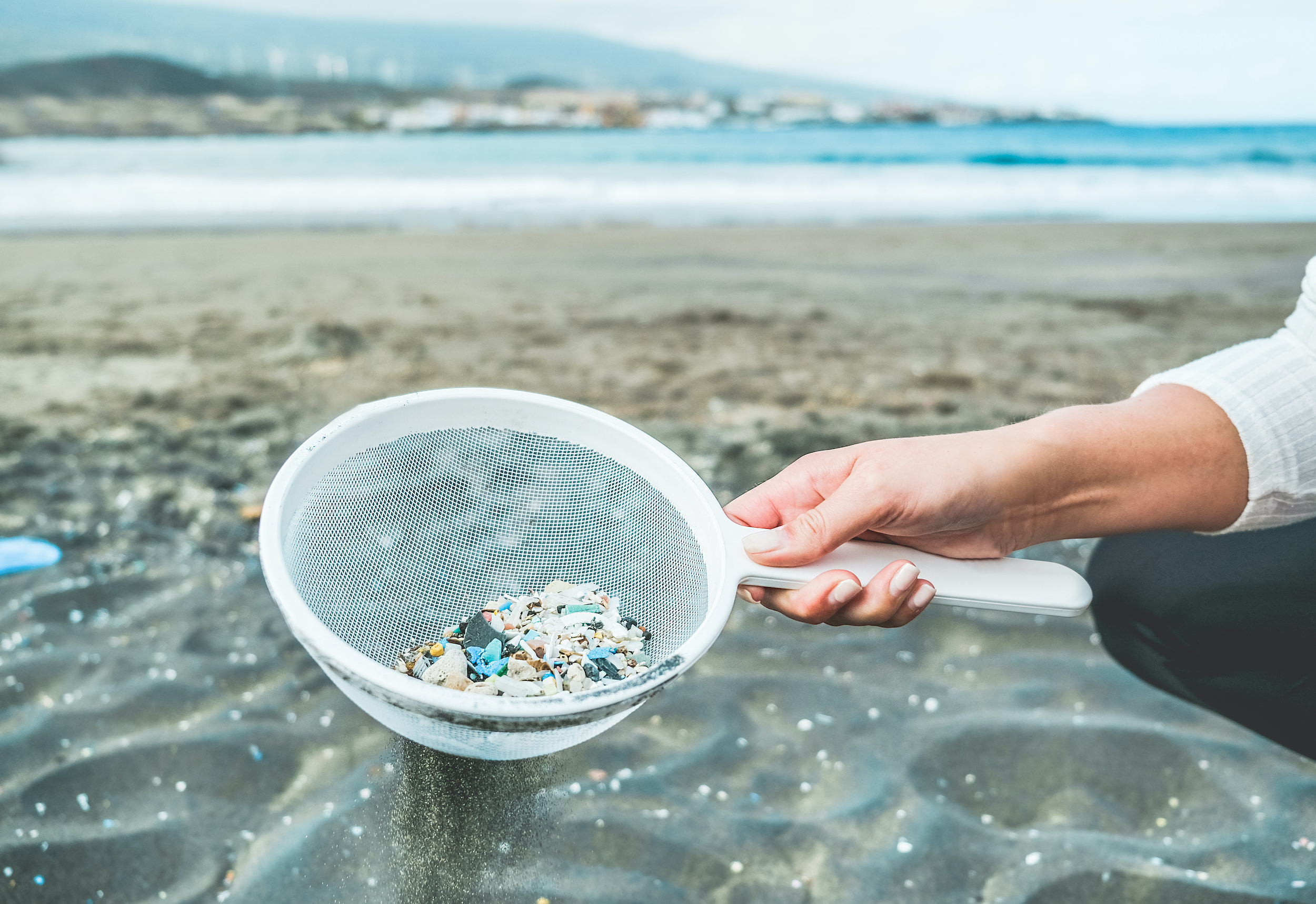By Mitriy Krause, Associate Researcher & Writer for Save The Water™ | June 16, 2022
Microplastics have become a household topic in the last few years. They are a physical pollutant that’s very worrying. Plastic contains chemicals that can endanger humans. Microplastics are also small and hard to notice. This poses a risk to the health of people and the earth.
We make and use a lot of plastic, so microplastics are more and more common. Many scientists continue to work to find how to solve this problem.
What Are Microplastics?
Microplastics are very small pieces of plastic. They are less than 5 millimeters in diameter. They break off of larger plastic items in the water or on land. Some synthetic materials, like certain clothing types, also contain microplastics. We can find these small pieces in all kinds of environments.
Here are just a few places where microplastics have been found:
- Water systems
- The human placenta
- Farm soil
- Air in remote areas
- The Arctic Ocean
Microplastics in the environment put us at risk. They can kill the plants and animals they share soil or water with. We rely on some of these creatures for food. Even scarier, microplastics can make it into our bloodstream.
Recent research also revealed that they can carry disease through water systems. After traveling through the water, these diseases affect both wildlife and humans.
The best solution is to stop polluting water with plastic and other contaminants. However, that is next to impossible. Water pollution comes from both industries and individuals.
Humans have done a lot of damage already. We should work hard to prevent more water pollution. In addition, we should also solve the current problem. Luckily, researchers are finding ways to do so.
Plastic-Eating Enzyme
Plastic and microplastics both pollute the environment. It takes hundreds of years for plastic to break down naturally. To speed up the process, engineers created an enzyme. This enzyme breaks down plastic in just days.
Enzymes are very small, but they help chemical reactions happen in all living beings. In other words, they take apart old things and make new ones.
However, it’s hard for plastic-eating enzymes to exist outside of a lab. Researchers need to find out how to make this technology stronger. Then, these plastic-eating enzymes can be used in all environments.
Tiny Robots Eat Microplastics
Microplastics are tricky because they are small and hard to notice. Some researchers created a different solution: tiny, plastic-eating robots. They’re also called microrobots.
Microrobots are coated with a material that attracts microplastics like a magnet. When the plastic is detected, the robots break down the material that bonds it together. In other words, the microplastics become natural materials.
So far, these microrobots can only be used in water. Even then, they do best in closed water systems, like drinking water and wastewater plants. Unfortunately, the magnetic material can attract other things, too. Other water pollutants like oil, waste, and non-plastic trash disrupt the microrobots’ functioning.
Still, these robots merit continual study. They could be a big help in filtering microplastics out of our local water systems.
Nanoparticle Coated Sponge
We all know sponges soak up water and soap to wash our dishes. However, scientists found that sponges can also be used to soak up microplastics.
First, the sponges are coated with nanoparticles. The nanoparticles act like a glue that only sticks to plastic. Then, the particles attract microplastics. The sponge soaks them up to be removed from the water.
Once scientists improve this technology, it could be used on both small and large scales. This means you could have a nanoparticle-coated sponge at home. Imagine if every person played a part in preventing water pollution. It would make it more efficient for large-scale filtration later.
Looking Forward
These are just some of the promising new technologies. Researchers are also exploring alternatives to plastic. Furthermore, traditional filtration methods continue to improve as our understanding of microplastics grows.





